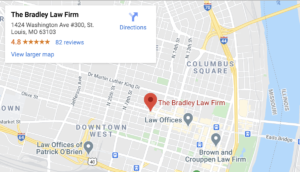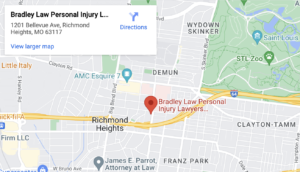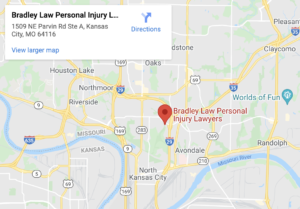
Liability can be defined as a legal responsibility. Liability means that the court has determined that a party to a lawsuit should be financially responsible for another party’s injuries or losses. The liable party will owe money to compensate the injured party for their damages.
In most personal injury lawsuits, an injury victim (plaintiff) attempts to hold an at-fault party (defendant) liable for their negligence. Negligence requires proving that the defendant failed to exercise reasonable care and caused the plaintiff harm.
However, other personal injury victims use the theory of strict liability to hold a defendant liable. Strict liability does not require proof that the defendant negligently caused the plaintiff’s injuries. Rather, a party is held strictly liable for a plaintiff’s injuries by engaging in certain types of dangerous conduct.
Table of Contents
What is Strict Liability?
Strict liability makes a defendant liable for a plaintiff’s injuries, regardless of whether they were negligent or whether they intended to cause the injuries. You will find strict liability in both criminal and civil law, but only certain types of circumstances can lead to a strict liability claim.
One example of a strict liability scenario is when someone is using dangerous explosives to do a controlled implosion of a building or property during construction. When someone uses something inherently dangerous like an explosive, that person is held strictly liable for any harm the explosion causes. It doesn’t matter if the individual used every precaution and followed every safety guideline perfectly.
Strict liability can consistently be found in statutory rape laws. In a statutory rape case, an offender is strictly liable for statutory rape for their sexual conduct with an underage person. It doesn’t matter what the offender thought regarding the victim’s age.
What Situations Can Lead to Strict Liability?
In civil lawsuits, there are only a few particular situations that can result in strict liability.
In Missouri, there are three primary situations where you can hold a defendant strictly liable when their conduct injures you:
- Defective products: A party that produces or sells a defective product can be held strictly liable for any injuries that result from the defective product.
- Abnormally dangerous activities: Some activities create a high risk of foreseeable harm even when those involved exercise reasonable care.
When these activities injure others, a court can hold those involved strictly liable.
- Animal injuries: If an animal has a propensity to be vicious, and the owner knows of this propensity, then the owner can be held strictly liable for any injuries caused by the animal. Dog bites are a common example.
If you think you might have a strict liability claim, make sure that you speak with our personal injury attorneys. An attorney can help you understand if your injury qualifies for strict liability or other legal theories.
What Can You Recover in a Strict Liability Case?
A strict liability case offers the same damages as a case based on negligence. Accordingly, you are entitled to two types of damages: economic and non-economic.
Economic damages compensate for financial losses related to injuries due to product defects, abnormally dangerous activities, dog bites, and other conduct triggering strict liability.
Non-economic damages make up for personal, emotional losses that are non-monetary in nature. For example, product defects, abnormally dangerous activities, and dog bites often result in disfigurement and scarring. Non-economic damages compensate for these and other kinds of pain and suffering after an injury.
If you are hurt in a strict liability case, then you can recover money for:
- Past and future lost earnings
- Medical costs, including future medical care
- Pain and suffering
- Emotional distress and mental anguish
- Loss of consortium
- Property damage
A court can also assess punitive damages to punish a defendant for their actions. These damages are uncommon because they attempt to penalize a defendant rather than compensate an injury victim. They can be awarded when a defendant’s actions were shocking and egregious.
Get Your Legal Questions Answered in a Free Consultation Today
If you were injured in an accident, you probably have questions about what to do next. If you are curious about the possibility of filing a strict liability claim, then contact us for a free consultation. Call today to schedule your consultation with one of our experienced attorneys at Bradley Law Personal Injury Lawyers or contact us online.




